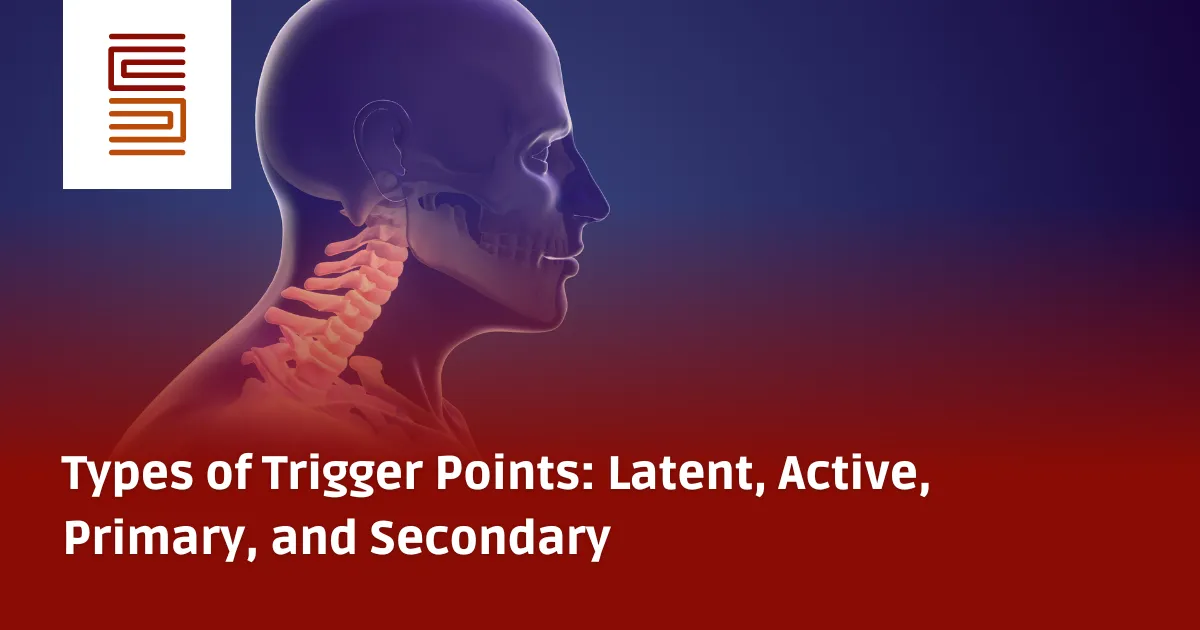Trigger Point Treatment: Effective Methods and Clinical Protocols
Explore effective methods for trigger point treatment, including spray-and-stretch, dry needling, ischemic compression, PIR stretching, and systematic clinical protocols.
Understanding Effective Trigger Point Treatment
Trigger points—small, hyper-irritable muscle knots—are responsible for chronic pain and various other symptoms. Effective trigger point treatment requires specialized techniques that directly target these muscle fibers, releasing tension and restoring normal function.
This article details highly effective trigger point release techniques and structured clinical protocols designed to comprehensively address complex pain conditions.
Why General Muscle Stretching Isn’t Effective
Before discussing specialized treatments, it’s crucial to clarify a common misconception: general muscle stretching is ineffective and often counterproductive for trigger points. Stretching a muscle containing active trigger points typically aggravates rather than relieves symptoms.
However, certain specialized stretching methods, detailed below, are highly effective when combined with augmentation techniques.
Trigger Point Release Methods
Effective trigger point treatments include specialized methods like Spray-and-Stretch, Dry Needling, Pressure Release, Micro-stripping, and Post-Isometric Relaxation (PIR):
1. Spray and Stretch Treatment
- Developed by Dr. Janet Travell.
- Combines a spray-on refrigerant as surface anesthesia with muscle stretching.
- Temporarily blocks pain perception, allowing the stretch to release the trigger point effectively.
- Highly effective but requires significant clinical skill for consistent success.
2. Trigger Point Injections and Dry Needling
- Injections use a small needle to break up trigger points, typically with local anesthetic injections.
- Dry needling uses a needle without injections to inactivate trigger points.
- Both methods effectively release trigger points; dry needling may result in more post-treatment soreness.
- These methods require extensive training and carry some risks due to their invasive nature.
3. Trigger Point Pressure Release (Ischemic Compression)
- A manual method involving direct, sustained pressure applied to a trigger point using thumbs, fingers, or elbows.
- Pressure is held for 4-8 seconds, repeated 3-6 times to relax contracted muscle fibers.
- Simple, easy-to-learn technique that effectively confirms trigger point location through referred pain patterns.
- Can be painful; requires careful pressure modulation by the therapist.
4. Micro-stripping Treatments
- Popularized by Clair Davies, involves a thumb-over-thumb technique applying short stripping strokes parallel to muscle fibers.
- Does not slide over skin but moves skin and superficial tissues across underlying muscle fibers.
- Highly effective for superficial trigger points, reducing therapist fatigue.
5. Post-Isometric Relaxation (PIR) Stretch Release
- Developed by Dr. Karel Lewit, effective for muscles difficult to address with direct pressure.
- Involves gentle isometric contractions at the muscle’s pain-free length, followed by passive stretching.
- Emphasizes the relaxation phase, enhanced by coordinated breathing and eye movements.
- Minimally painful; effective at progressively increasing pain-free range of motion.
Clinical Considerations for Comprehensive Trigger Point Therapy
Effective trigger point therapy often involves complex, multi-layered pain conditions, requiring clinicians to understand interactions between multiple trigger points.
Clinicians must evaluate:
- Which trigger points directly cause the presenting symptoms?
- Which trigger points arose from initial muscular overload?
- What secondary (satellite) trigger points could develop from current trigger point activity?
- How biomechanical and postural distortions could activate further trigger points.
- Proper sequencing for treating multiple trigger points systematically.
Systematic Clinical Trigger Point Therapy Protocols
At Texas Support Network, we utilize comprehensive, systematic protocols to address the complexity of trigger point-related pain effectively.
These protocols:
- Guide clinicians step-by-step through assessment and treatment.
- Address trigger points in the optimal sequence to ensure lasting results.
- Consider biomechanical, postural, and referred pain influences.
- Provide reliable outcomes, especially in cases where other treatments have failed.
These structured protocols form the foundation of our Clinical Trigger Point Therapy System, emphasizing consistent, effective treatment results.
Advantages of Texas Support Network’s Clinical Protocols
- Comprehensive and systematic approach ensures thorough identification and treatment of trigger points.
- Clear identification of referral patterns helps clinicians quickly pinpoint pain sources.
- Effective integration of multiple treatment techniques maximizes patient comfort and clinical outcomes.
- Consistent clinical outcomes, particularly beneficial in complex chronic pain scenarios.
Texas Support Network’s Approach to Trigger Point Management
Our commitment at Texas Support Network is to deliver comprehensive, integrated care through:
- Home Care Services: Supporting patients in daily activities while managing chronic muscle pain and dysfunction.
- Hospice Care Assistance: Providing comfort and effective symptom relief for those with chronic conditions.
Through structured clinical protocols and effective trigger point therapy methods, we deliver superior outcomes, even in challenging cases.
Contact Texas Support Network for Effective Pain Relief
If chronic muscle pain affects your daily life, our experienced professionals can help. Let us create a personalized treatment plan to effectively manage your symptoms:
Visit: Texas Support Network




